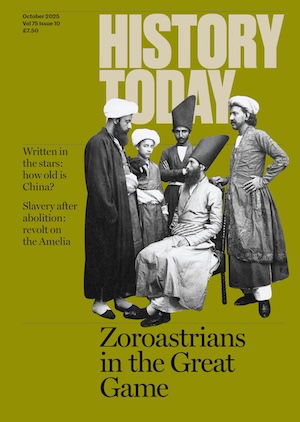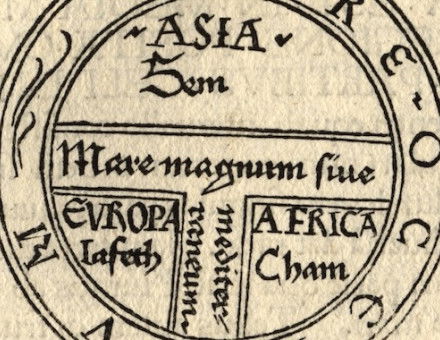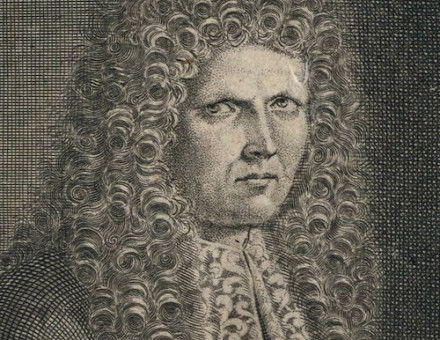Citizen Kane
Sarah Street discusses how 'Rosebud' and Pearl Harbor are inextricably entangled in this most enigmatic of film portrayals of a media tycoon.
The production history of Citizen Kane reads like a film script. Unfettered by the constraints of the Hollywood studio system, a boy genius is granted his wish to produce a film without studio interference, hire his theatrical friends and use the best technicians in Hollywood. When Orson Welles signed his contract in July 1939 with RKO, one of Hollywood's major film studios, he was given final cut: complete control over what eventually appeared on screen, provided the film did not exceed a modest budget of $500,000.
This unusually generous contract was part of RKO's strategy to attract new talent and confer artistic respectability on a film industry which had experienced a turbulent decade with the arrival of the 'talkies' and the Depression. An enterprising producer, George Schaefer, secured a promising deal: the services of a controversial but charismatic radio personality and theatre producer who brought with him a cast of characters who, like him, were new to film. Novelty and promise were the key ingredients of an arrangement which tested the limits of Hollywood's tolerance of aesthetic experiment, political bravado and sheer hype.
Now regarded as a film classic, it is somewhat ironic that Citizen Kane was not widely seen until the late 1950s. Its initial distribution was suppressed because it was commonly assumed that the film's central character, Charles Foster Kane, was a veiled critical portrait of newspaper magnate William Randolph Hearst. Hearst's success in 'killing' Kane in 1941 tells us much about the power of the press in that period and how far a rich and powerful man would go to suppress criticism. It also reveals that cinema, the most popular form of mass entertainment, was widely recognised. as an influential medium of persuasion and propaganda.
A second irony of the film's early history is that Welles did not go to Hollywood in the first instance to make Citizen Kane. His first project, a filmed version of Joseph Conrad's novella Heart of Darkness, was never produced because it exceeded its budget at the pre-production stage. It was only as a last-minute attempt to do something useful with his generous contract that Welles, in collaboration with the experienced screenwriter Hermann Mankiewicz, developed the Kane idea. Since Welles was extremely interested in contemporary politics it was likely, however, that any film he made would involve themes reflecting this interest. The timing of its production and release gave it a sense of urgency while the film was being written war had broken out in Europe and it is essential to regard Citizen Kane as a product of that critical situation.
Welles' politics are extremely important for a full understanding of Citizen Kane in its contemporary context and partly explain Hearst's dramatic reaction against the film. In the 1930s Welles was a fervent supporter of President Roosevelt's New Deal: interventionist economic and social policies which had been enacted to combat the Depression, involving public works schemes and social security. By the time Welles went to Hollywood he had already produced plays financed by the Federal Theatre, an arm of the New Deal's cultural policy which was a relief measure to provide employment in the theatre. Having spent time in Europe and being deeply attracted to European culture, Welles was also an anti-fascist and urged American intervention in the Second World War. Hearst, on the other hand, campaigned against the New Deal and was a firm isolationist: hence his recriminations against Welles when Kane was first released.
Although not explicitly named as the model for Charles Foster Kane, Hearst bore close enough resemblance to the fictional character to invite comparison even before the film was complete. As an ex-newspaper man turned screenwriter Mankiewicz had first-hand knowledge of Hearst and along with other writers had visited him in his vast mansion, San Simeon. Ostensibly Citizen Kane is about a reporter's search for the meaning of a dying newspaper magnate's last words, 'Rosebud'. This quest triggers five flashback sequences when the reporter, Thompson, investigates Kane's life. He visits the archive of Kane's guardian, Thatcher, and interviews four key people: his business manager, Bernstein; his friend Leland, his second wife, Susan; and his butler, Raymond. The flashback structure allows us access to key scenes from Kane's life from childhood to old age. We learn that he inherited a fortune by chance; was separated from his mother at an early age to be educated to use that fortune: started a newspaper which grew into an empire; embarked on a disastrous political career; lost his two wives; and ended his days in a pathetic condition in self-imposed exile in his baroque palace, Xanadu.
Before the flashbacks, however, we are given a brief, but comprehensive series of 'snapshots' from Kane's life by means of a newsreel which has obviously been modelled in style on The March of Time. In an arresting blast of sound and image we are presented with segments from the life of a man whose exploits have been full of contradictions and riddled with inconsistencies. A montage of newspaper headlines reporting Kane's death describe him in startlingly different terms: while one refers to him as 'an outstanding American' another labels him 'US Fascist No. 1'. We see him as a man of the people but also keeping company with Hitler.
As the story unfolds the parallels between Hearst and Kane are obvious: both controlled newspaper empires; both frequently distorted the truth for a good story in the tradition of 'yellow journalism'; both supported war with Spain in 1898; both dabbled in politics and both ended their lives cocooned in huge buildings (San Simeon and Xanadu) surrounded by precious art objects. Although Hearst did not, like Kane, force his wife into an unsuccessful opera career, he did exercise control over Marion Davies' film roles. Davies, whom Hearst never married, was a gifted comic actress, but because most of her films were financed by Hearst she was forced to play romantic heroines to which her talents were unsuited. Welles used Marion Davies' well-known liking for jigsaw puzzles as a means of conveying Susan's boredom in Xanadu. With these and other glaring similarities it is not, therefore, surprising that the first reviewers of Citizen Kane were impressed by its contemporary significance.
Criticism of Hearst stemmed from Welles' New Deal liberalism and desire for America to intervene in the Second World War; both these policies were opposed by Hearst's 'yellow press'. In this sense the film is a direct attack on Hearst's political beliefs, business activities and journalistic style. It is no coincidence that Citizen Kane was being produced exactly when the isolationist vs. interventionist debate was at its height in America: the film was released six months before Pearl Harbor. In this broad context, via the portrayal of Kane as obsessed and isolated, surrounded in Xanadu at the end of his life by objets d'art from all over Europe, Kane's central character stands for blinkered American isolationists keen to absorb European culture, but at the same time steer clear of political involvement to assist Europe's plight against Fascism. By portraying Kane's political failure and subsequent exile in Xanadu Welles was making indirect comment on the contemporary European crisis.
At another level one also gets a sense that in Citizen Kane Welles is criticising fundamental contradictions within monopolistic journalism and political rhetoric. These contradictions were evident in Hearst's business practices and political ambitions. Kane represents the era of pre-New Deal attitudes, the 'old order' when newspapermen wielded enormous power. The film reveals that that power is founded on distortion and hypocrisy. One of the Inquirer's first campaigns is against monopolistic business trusts, but it is only the character Leland who sees that Kane's newspaper empire is guilty of a similar degree of concentration. When Kane's growing empire poaches staff from a rival paper, the Chronicle, we know that the reporters will adapt their style to tit the ideological remit of the Inquirer. In Kane's political career he claims to represent 'the people' but is fundamentally opposed to trade union organisation. ironically, his political career is destroyed by exposure in the press of his affair with Susan Alexander. Kane proves that he can make an untalented singer into an opera star by falsifying the reviews. Welles is, therefore, using one medium, film, to expose the evident hypocrisy of another, the press.
It is worth remembering that in the late 1930s film was but one of the new mass media which were beginning to exert a great deal of influence over public opinion. As well as cinema, radio was extremely popular and indeed served as Welles' first encounter with mass notoriety with Mercury's infamous The War of the Worlds broadcast in 1938, which persuaded millions of Americans that Martians were attacking the Earth. In some ways the panic created by this broadcast prepared Welles for the furore over Citizen Kane. Broadcasting was at the peak of its influence in the 1930s and Roosevelt's 'fireside chats' had taken political propaganda quite literally into the homestead. Welles' experience with The War of the Worlds and his general perception of the influence of radio meant that he was fully acquainted with controversy and aware of the different forms of power to be found in the press, radio and film. Whereas Citizen Kane suggests that the old order of newspaper journalism was flawed and outdated it is ironic that Hearst's reprisals demonstrated that the 'yellow press' still wielded considerable influence.
Welles is also commenting more generally on the historical enterprise in the sense that the reporter is researching a man's past by examining particular sources familiar to all historians: memoirs and interviews. In many ways the investigation could be a cautionary tale about the need to scrutinise sources. In the process of Thompson's investigation we learn more about Kane's associates and ex-wife than about the central protagonist who is the subject of his enquiries. Ironically, in spite of the rigour of Greg Toland's deep-focus photography (everything in the frame is of equal definition) the film medium has proved no more successful in revealing the 'truth' of Kane's life than the press. The impossibility of the 'truth' is a larger theme still when we end up knowing little more about Kane than we already knew from the mock newsreel. The revelation that 'Rosebud' is Kane's childhood sled (and all it symbolises in terms of lost innocence and the shock of being separated from his mother) answers some questions, but by no means all. The mass media are thus presented cynically. Welles shows the media as being incredibly powerful but not always capable of rendering the truth.
More than anything else, the Hearst controversy overshadowed discussion of Citizen Kane's artistic qualities. Although its brilliance was noted by many reviewers, the most damaging aspect of Hearst's revenge was when he persuaded cinemas not to show the film and refused to give RKO any publicity in his papers. The fact that the studios were worried about Hearst's threatened anti-movie reprisals is testament to the persuasive power of the press in terms of advertising new film releases. The movie moguls were also perhaps afraid that Hearst papers would expose salacious gossip about them in their society pages. Schaefer was loyal to Welles throughout the Hearst controversy: at one point he refused an offer of money by a studio boss to destroy the negative and prints. After such difficulties RKO was forced to withdraw the film from distribution and it was not reissued until the 1950s. The generation of film-goers for whom Citizen Kane was produced were unable to see it.
It is arguable, however, that had the film been on major release in 1941 it would not have done good business because contemporary audiences would have found its themes too bleak and its 'hero' too de-centered. The flashback structure was unusual and, perhaps, alienating. More typically, Hollywood films subscribed to 'unwritten' rules of structural coherence; goal-orientated heroes who triumph against obstacles; unobtrusive camera and editing techniques and an apparently obligatory happy ending. Citizen Kane did none of these things and so it is unlikely that outside the 'art house' market the film would have been a box office success if the Hearst controversy had not prevented it from receiving nationwide distribution. In the few locations where it played business was poor. Although critics praised its artistic merits Citizen Kane won only one Academy Award (it was nominated for nine) for the screenplay.
Citizen Kane's second and far more sustained 'lease of life’ resulted from critics' appreciation since the late 1950s of Hollywood directors who managed to create interesting and innovative works of film art: within the artistic constraints imposed by the studio system. The studio 'factory' was seen to have produced its auteurs against the grain of artistic standardisation and economic regulation. Having suffered from studio interference in his post-Citizen Kane films Welles was the perfect candidate for reappraisal. This linked in later with at first grudging appreciation of the technical achievements of Welles' collaborators, primarily Greg Toland who was responsible for the cinematography and Hermann Mankiewicz, resurrected as an important contributor to the script by critic Pauline Kael with her 'Raising Kane' article in the New Yorker in 1971 (the 'Rosebud' hook was Mankiewicz's idea whereas Welles insisted on the line 'I don't think that any word explains a man's life').
Gradually the film has crept into the canon of 'great film classics', a model of cinematic achievement and an obtrusive display of what cinema can do best: cinematic spectacle. RKO technicians used special-effects to create startling images of cameras apparently swooping through windows; models were filmed to create the illusion of large buildings and Toland's deep-focus photography gave the film its distinctive crisp style. As interest in the application of psychoanalysis to film studies has grown, theorists have stressed the significance of Kane's Oedipal crisis and taken seriously what Welles dismissed as the 'dollar-book Freud' element of the plot. The film has meant many things to many people and continues to engage film scholars and impress new generations of film-goers.
Even though the credit of Welles' collaborators has been stressed, his overall vision for Citizen Kane and clear conception of the film's visual style are incontestable. These are the key elements in assuring its longevity as a film classic. Also important is its refusal to reveal all by means of the investigative structure and enigmatic resolution, Welles has ironically pointed out a universal truth. The historian's task is complex and demanding: a single word does not explain a man's life, nor does a news- paper headline, a radio report or a densely composed film frame. All are sources which must be treated with the utmost scrutiny but which taken together can reveal significant 'truths' about elements of the past, truths which are often not what we would like to learn. In that sense Citizen Kane is likely to continue to fascinate audiences for many years.




